Standard Shower Size Guide: Dimensions for Every Bathroom
When planning a bathroom remodel, one of the most important decisions to make is selecting the right shower size. The shower is a focal point in any bathroom, and its size impacts not only the functionality but also the aesthetics and comfort of the space. Whether you're installing a new shower in a compact bathroom or designing a luxurious walk-in shower in a larger space, understanding standard shower dimensions and how to measure your area correctly is key. This comprehensive guide will walk you through the different shower sizes available, factors to consider, and tips for choosing the best option for your home.
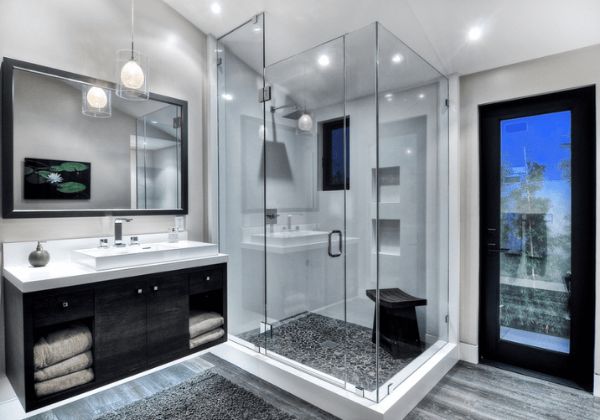
What is the Standard Shower Size?
Before you begin selecting a shower, it’s essential to understand what constitutes a "standard" shower size. Standard shower sizes are designed to fit most bathrooms and accommodate various needs, offering a balance of functionality and comfort. By knowing these standard dimensions, you can ensure that your shower fits seamlessly into your bathroom layout and meets any required building codes.
Common Dimensions for Showers
Most showers fall within a typical range of sizes. The smallest common size is 32 inches by 32 inches, which is ideal for small bathrooms where space is a premium. On the larger end, showers can measure up to 36 inches by 48 inches or more, providing ample room for movement and additional features like benches or multiple showerheads. A standard shower enclosure should provide at least 36 inches of width and depth to offer a comfortable shower experience.
Variations Based on Shower Type
Shower sizes can vary significantly depending on the type of shower you choose. For instance:
- Walk-In Showers: These tend to be larger, often ranging from 36 inches by 48 inches or bigger, making them perfect for those looking for more space or accessibility.
- Corner Showers: For smaller bathrooms, corner showers can save space. These showers typically start at around 32 inches by 32 inches and can expand slightly depending on the available area.
- Tub-Shower Combos: A tub-shower combo generally takes up more room but offers the benefit of both a full bath and a shower in one unit. The average size for a tub-shower combo is about 60 inches by 30 inches.
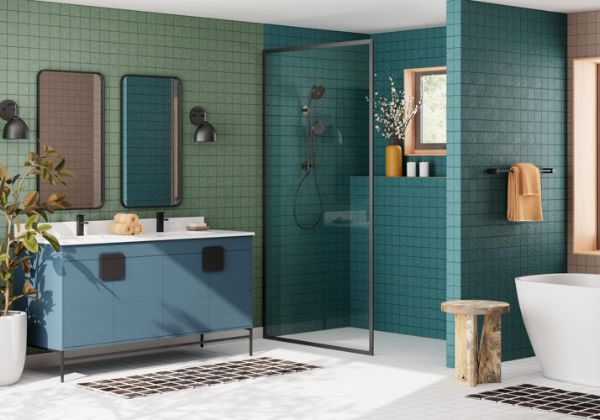
Factors to Consider When Choosing the Right Shower Size
Choosing the right shower size for your bathroom involves more than just fitting a unit into your space. You also need to think about practical considerations such as the available space in your bathroom, user preferences, accessibility needs, and any relevant building codes. Each of these factors will help you narrow down the options and choose the perfect shower for your bathroom layout.
Bathroom Space Constraints
The first and most critical factor to consider is the space you have available. Smaller bathrooms will require more compact shower options like corner showers or tub-shower combos, while larger spaces allow for more flexibility, such as expansive walk-in showers. A proper understanding of your bathroom's layout will help you choose the right shower size that maximizes space without sacrificing comfort.
User Preferences and Accessibility Needs
User preferences play a vital role in selecting a shower size. For instance, some people may prefer the openness of a walk-in shower, while others may want a shower unit that offers more privacy. If accessibility is a concern, you may want a larger shower area to accommodate mobility aids, such as grab bars or benches, or to ensure ease of entry. The shower experience can be further enhanced by choosing the right dimensions and features.
Building Codes and Regulations
It’s essential to ensure that your new shower complies with local building codes and regulations. Many building codes dictate minimum shower sizes to ensure safety and functionality. For example, a shower must offer at least 30 inches of clear space in any direction to meet most codes. Understanding these requirements can help prevent costly mistakes during installation.
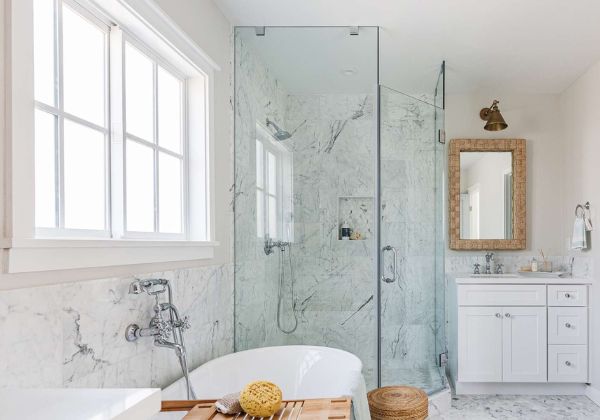
Standard Shower Door Sizes
Shower doors are a crucial part of your shower enclosure, both in terms of functionality and style. Depending on the size and type of shower you choose, the door size can vary. Sliding doors, hinged doors, and pivot doors each have their own standard dimensions, which are designed to fit most enclosures. Choosing the right shower door can enhance the overall look of your bathroom and provide easy access to the shower.
Typical Shower Door Dimensions
Shower doors come in several standard sizes. Sliding shower doors are typically used for larger enclosures, ranging from 48 to 60 inches in width, while hinged and pivot doors are more common in smaller spaces, starting at 22 inches wide. These sizes allow the doors to function smoothly without taking up too much space in your bathroom. The type of shower door you choose should complement your overall bathroom layout and shower space.
Custom Shower Door Options for Unique Spaces
In cases where standard-sized doors won’t work, custom shower doors are available. Custom doors can be tailored to fit unique spaces, such as oversized walk-in showers or showers with irregular dimensions. This option ensures that you get a door that fits perfectly with your new shower and complements your design.
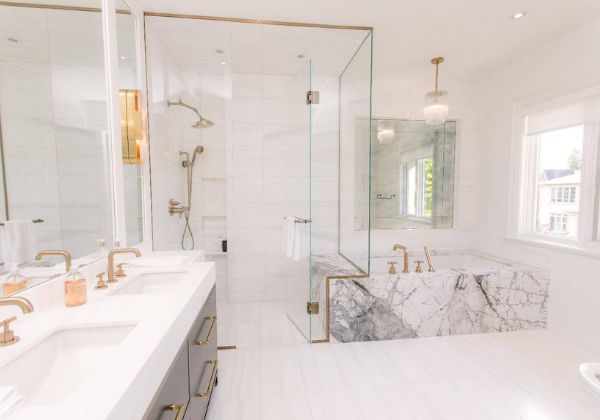
How to Measure Your Space for a New Shower
Before purchasing or installing a shower, accurately measuring your bathroom space is essential. This will help you determine whether a standard-sized shower will fit or if you’ll need to opt for custom dimensions. Measuring your space correctly can prevent costly mistakes and ensure that your new shower fits both aesthetically and functionally.
Step-by-Step Guide to Measuring
- Measure the Width and Depth: Start by measuring the width and depth of the area where the shower will be installed. Be sure to include any necessary allowances for shower doors or other fixtures.
- Ceiling Height: Measure the ceiling height to ensure you have enough room for any overhead fixtures like rain showerheads or lighting.
- Plumbing and Drain Placement: Ensure that your measurements take into account existing plumbing and drain locations, as these can affect where your shower unit can be installed.
Mistakes to Avoid When Measuring
- Failing to account for the thickness of walls or shower curtains can impact how the shower enclosure fits.
- Overlooking clearance space for doors, particularly in tight spaces.
- Forgetting to account for the location of fixtures like faucets or showerheads, which may require additional space considerations.
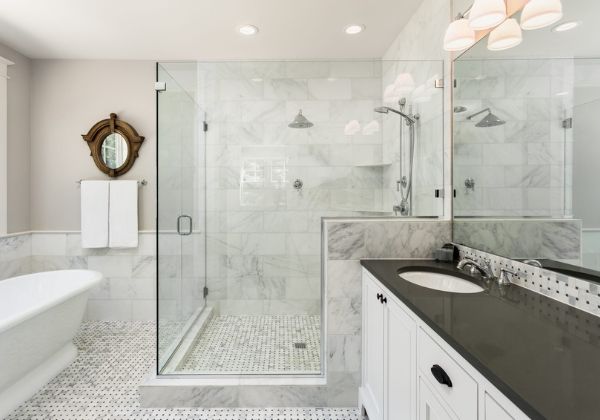
Best Shower Sizes for Small, Medium, and Large Bathrooms
The size of your bathroom greatly influences the best shower size for your space. Whether you have a small powder room or a large luxury bathroom, choosing the right shower dimensions is crucial to making the most of the available area. Here, we explore the best shower sizes based on bathroom size, from small and functional to large and luxurious.
Ideal Dimensions for Small Bathrooms
For small bathrooms, space-saving options like corner showers or compact prefabricated units are ideal. A 36-inch by 36-inch shower will fit comfortably in most small bathrooms, while still providing enough room for an enjoyable shower experience.
Best Options for Medium-Sized Bathrooms
Medium-sized bathrooms offer more flexibility in terms of design and shower type. Showers measuring around 36 inches by 48 inches are a popular choice for these spaces, as they provide a balance between space efficiency and comfort.
Shower Sizes for Large Bathrooms and Luxury Spaces
For large bathrooms, there are more possibilities. Walk-in showers with dimensions of 48 inches by 60 inches or larger can be installed, offering space for multiple showerheads, seating, and other luxury features. These larger enclosures create a spa-like feel and allow for customization based on personal preferences.
Standard Shower Sizes: Pros and Cons
While standard shower sizes are designed to fit most bathrooms, there are pros and cons to consider. These sizes are convenient and widely available, but they may not be suitable for every bathroom or personal need. Understanding the advantages and limitations of standard dimensions can help you make the best choice for your bathroom remodel.
Advantages of Using Standard Shower Sizes
One of the primary benefits of standard shower dimensions is their convenience. Prefabricated units and shower doors are designed to fit these dimensions, making installation quicker and more affordable. Additionally, these sizes are often compliant with building codes, reducing the likelihood of complications during installation.
Limitations and Customization Needs
However, standard shower sizes may not work for every bathroom, particularly if you have an unusual layout or need extra features. In such cases, custom showers allow you to create a shower area that fits perfectly with your space and preferences. While more expensive, the added comfort and functionality often justify the investment.
Frequently Asked Questions
This section addresses some of the most common questions homeowners have when selecting a shower size. Understanding these details can help you make an informed decision during your bathroom remodel and avoid common pitfalls.
Can I Customize a Standard Shower Size?
Yes, standard showers can often be customized to fit unique spaces or personal preferences. Customizing allows you to select specific features or adjust the size of the shower to accommodate your bathroom layout.
What is the Minimum Space Required for a Shower?
Most building codes require a minimum space of 30 inches by 30 inches for a shower, though a 36-inch square shower offers a more comfortable experience.
Do Standard Sizes Include Shower Seats or Benches?
Standard showers typically do not include built-in seats or benches. However, you can add these features in custom showers or opt for larger units that allow for more space.
How Do I Measure My Bathroom for a New Shower Installation?
To measure your bathroom for a new shower installation, start by measuring the length, width, and height of the space where the shower will go. Don’t forget to account for plumbing and fixture locations to ensure the shower fits properly.
What are the Standard Dimensions for Shower Doors?
Shower doors typically range from 22 inches to 36 inches in width for hinged or pivot doors, while sliding doors are often 48-60 inches wide.
Conclusion
Choosing the right shower size is a crucial part of any bathroom remodel. Standard shower sizes offer convenience and cost-efficiency, but understanding the different types of showers, from walk-in to corner units, can help you select the ideal fit for your space. Whether you're working with a small, medium, or large bathroom, you’ll find a shower size that fits your needs. For homeowners looking to connect with professionals who can help with remodeling your bathroom, consider using Remodel Your Home to find local experts who can ensure the job is done right, within your budget.

Remodel Your Home
We are a leader in the home improvement space with over 20 years of experience pairing homeowners with construction experts.
About Us